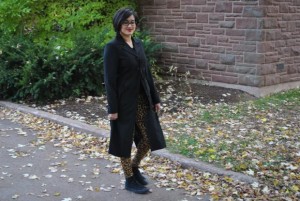 Recital features Bach, Beethoven, and Brahms.
Recital features Bach, Beethoven, and Brahms.
Stephen Runge transported audiences back in time as he performed a program entitled “Back to Baroque” during his solo faculty recital, which featured a series of piano pieces inspired by the Baroque era from Bach, Beethoven, and Brahms. The pieces Runge showcased combined the innermost expression of the Romantic era with the formulaic structure of Baroque music. The recital took place on Friday, Oct. 25 at the Brunton Auditorium.
Runge began the evening by delving directly into two pieces by Baroque composer Johann Sebastian Bach, without any formal address to the audience. He played with impressive precision and treated the most complex rhythms with a mixture of ease and authority.
While Runge’s delivery of Bach’s pieces was meticulous, and demonstrated incredible musicality and commitment to periodic character, the second half of the performance was more engaging and consistently dynamic. His final piece, “Variations and Fugue on a Theme by Handel” by Johannes Brahms left the audience entranced and amazed by the calibre of his musicianship. Filled with dissonant harmonies that resolved into tonal melodic structures, the piece featured opposing moods of tranquility and power that sustained interest in the long composition.
The diversity of the program added an element of interest and engagement to the performance. The Baroque elements in the Romantic pieces demonstrated to audience members how musical themes traverse periods, and how composers simultaneously react against and build upon past traditions.
Throughout the first half of the performance, Runge remained distant from the audience, preferring to immerse himself in the music. While he occasionally seemed disconnected from his listeners, his few interactions with the audience allowed the music to take centre stage, and speak for itself.
Before the second half of the program, Runge addressed his audience for the first time in an amiable and informative manner. He provided a bit of necessary context for the second part of the performance, which featured works from Beethoven and Brahms, both composers from the Romantic and Classical periods. Runge explained that early music and the rules of counterpoint heavily influenced the two composers.
Although Baroque music is filled with rhythmic counterpoint and rich polyphonic textures, the repetitive and formulaic compositional structures can sometimes make a piece feel like it has fallen flat. During Runge’s performance, there were moments in his second Bach piece, “Paritia No. 4,” where I had a sense that the music plateaued for a short period of time. Bach’s pieces were frequently devoid of dynamic marking, leaving modern day musicians to add their own dynamic preferences to the piece. I found that Runge’s rendition of the piece could have benefited from more dramatic dynamic interpretations. However, his phrasing, which is left equally subjective, was sensitive, thoughtful, and acted as the perfect complement to the movements’ distinct moods.
Runge’s performance was met with a positive reception from audience members who appreciated both his musicianship and his well thought out program.
“His program allowed the audience to experience both the change in style, and development of the instrument that occurred over a period of about 300 years,” said Dorian Baker, a fourth-year music student in Clarinet Performance. “As a musician, the choice of programming is an integral part to the success of a performance, and Runge delivered.”
The recital concluded with a standing ovation from the audience, reminding us all that it’s good to be brought back to the Baroque era.





